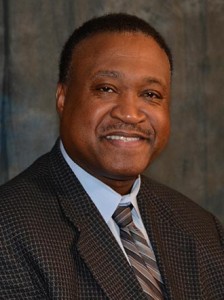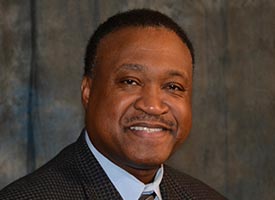By Roosevelt Gray Jr.
February is Black History Month.
The official history of black ministry in the LCMS began in 1877 — 14 years after President Abraham Lincoln issued the Emancipation Proclamation and 30 years after the Synod was formed.

The significance of these historic events would change the course of history for many blacks in the Deep South and eventually throughout the nation.
In the Deep South throughout those early years, educating blacks and the education system were driven by segregation. Yet it was known that many white Christians would create and encourage opportunities for education as they fought for fairness and equality in educating their black neighbors, fellow Americans, and Christian brothers and sisters. Both black and white churches were creating communities of Christians who believed that education, faith and family were at the very foundation of how God had created humanity to live together.
Our predominantly German church body heard the Macedonian call 137 years ago to go south and reach a large population of black Americans who were in many cases relegated to a lifestyle of subsistent and share-crop farming, and as day servants and common laborers.
Though some blacks were being educated in segregated black schools and higher-education institutions, the vast majority lived a meager existence as American citizens and often had little hope of a quality education that would give them social, civic or community equality, or an upwardly mobile life that would lead them and their children out of a lifestyle of poverty and illiteracy.
Value of education
Martin Luther believed that well-educated youth are an asset to society.
“I do beseech all of you, my dear sirs and friends, for the sake of God and poor youth,” he wrote, “not to treat this matter [education] as lightly as so many do who do not see what the prince of this world intends. It is a serious and important matter, in which Christ and all the world are mightily concerned, that we help and assist our youth. By helping the youth we shall be helping ourselves and all men” (What Luther Says, section 1318).
Dr. Luther understood that besides preaching the Gospel — the most important task of the church — a good education is the best investment.
“You parents cannot prepare a more dependable treasure for your children than an education in the liberal arts. House and home burn down and disappear, but an education is easy to carry off,” he wrote (What Luther Says, section 1319).
Preaching the Gospel, education and Christian faith and life became the mission call of the Synod to black America.
C.F.W. Walther, the Missouri Synod’s first president, understood well the need to live out the mandate of Christ to disciple the nations. In July 1877, he challenged the Lutheran Synodical Conference assembled at Fort Wayne, Ind., to begin a program of Gospel outreach to blacks and American Indians in the United States.
The Synodical Conference’s first missionary to black people, the Rev. J.F. Doeshcher, was commissioned the following October. He established the first black Lutheran congregation in Little Rock, Ark., St. Paul’s Colored Lutheran Church. Immediately, the first black Lutheran Christian day school was opened at St. Paul.
In 1878, Doeshcher completed a missional tour of Tennessee, Arkansas, Mississippi, Louisiana, Alabama, Florida, Georgia and Missouri — states with sizable poor, black populations in need of the saving grace of Christ.
The Rev. Dr. Richard C. Dickinson wrote in his book Roses and Thorns that in 1878, Mount Zion Lutheran Church, New Orleans — the oldest existing black Lutheran congregation in America — was established. A year later, the first black Lutheran Christian day school in New Orleans opened with 26 students. Many other black congregations were started in Louisiana, as well. Dickinson was the first executive director of the LCMS Commission on Black Ministry — which later became the LCMS Board for Black Ministry Services.
‘A unique … experience’
Meanwhile, in North Carolina, a unique black Lutheran experience was taking place. The Rev. David James Koontz, a black Lutheran pastor, worked under the supervision of the North Carolina Synod of the Lutheran Church. In 1876, he had been licensed to preach. On May 1, 1880, he was ordained in the ministry, but limited to work exclusively among blacks. He began holding services for a small number of people in Concord, N.C. Grace Lutheran congregation was started there with his efforts in 1883.
In 1891, the Rev. Nils Jules Bakke came to Grace, Concord, as missionary pastor for the LCMS. At that time, Grace had a membership of 20 communicants and 40 baptized souls. Under Bakke’s leadership, a church building was constructed and a Christian day school started.
Immanuel Lutheran College began in Concord in 1903 under the leadership of the Rev. J.P. Smith, Grace’s pastor from 1903 until 1909. The college was relocated to Greensboro, N.C., in 1905 and closed in the early 1960s.
In Greensboro, Immanuel Lutheran College offered a curriculum that included high school, college and seminary education. Many black students were prepared for service in the world as LCMS pastors, teachers and other professional church workers, as well as for faithful lay leadership. Alumni have served in a number of national leadership positions — not only with the Synod, but also in Africa.
“All those alumni — men and women alike — are profoundly thankful for the Immanuel experience. May God be forever praised through it,” says the Rev. Dr. Bryant C. Clancy Jr., a 1961 Immanuel College graduate who from 1990 to 2001 followed Dickinson (also an Immanuel graduate) as executive director of the Synod’s black-ministry office.
It is said that God uses ordinary people to create extraordinary events in history. Rosa J. Young was that ordinary person that God used for an extraordinary event to change the course of history for thousands of blacks who lived in the Alabama “dark belt region,” oftentimes under unthinkable conditions.
Born in Rosebud in 1874, Rosa Young graduated as valedictorian from Payne University in Selma.
With the help of the LCMS, Young founded 30 rural congregations and schools in three Alabama counties. Under her initiative, Concordia College Alabama, Selma, Ala., was founded in 1922. It continues to hold the distinction as the nation’s only historically black Lutheran college.
Rosa Young had a heart for faith, family and education. She knew that education was the key and faith was the foundation for lifting blacks out of illiteracy and poverty. She is buried in front of Christ Lutheran Church in Rosebud, Ala.
Through the church, proclamation of the Gospel, Christian education and a life of faith were the foundations that changed the course of history for many blacks in the South from the emancipation through the 20th century. The LCMS played a very important role during that crucial time in the history of our nation.
Central to our black-ministry efforts today is a focus on sharing the Gospel through acts of mercy by providing assistance, advocacy and networking opportunities for LCMS districts, congregations, schools and organizations seeking to reach out to predominantly black populations. The aim is to touch lives with the Gospel through mercy care. Our Black Ministry Family Convocations provide those involved in black ministry with an opportunity to gather, learn and worship together.
‘Exciting time in mission’
The 21st century is an exciting time to be involved in the mission of God and His church, especially with the growing minority ethnic population in the U.S. Among those ethnic groups, the African-American and black population are growing in a variety of ways.
In the past, the black population in the LCMS has been largely concentrated in the Southern and Southeastern Districts, a result of the trans-Atlantic slave trade that forced African migration to the U.S. prior to the 19th century. Many have moved north for schools, jobs and other opportunities.
Growth also is coming from new immigrant black groups — people whose origins are from Africa, but who are now coming by way of Canada, Europe, Central America, South America and other places. Some see this as a challenge for the nation, but the church must see it as an opportunity for the Gospel.
Individual Lutherans and congregations can support black ministry locally and across the Synod. Here’s how:
- Pray that God would provide men and women to serve in black ministry.Reach out in witness and mercy to your black neighbors, friends and co-workers.
- Other congregations can partner with black congregations in urban centers to strengthen each other in their life together.
- Gifts to the LCMS designated for “Black Ministry,” “National Mission” or the “Global Mission Fund” provide vital resources to enhance black-ministry efforts across the Synod.
God doesn’t see a white church or a black church or a yellow church or a brown church. His church is called to provide His salvation of grace for everybody, regardless of color or culture, with equal access to God through Christ.
The Rev. Roosevelt Gray Jr. is director of LCMS Black Ministry.
